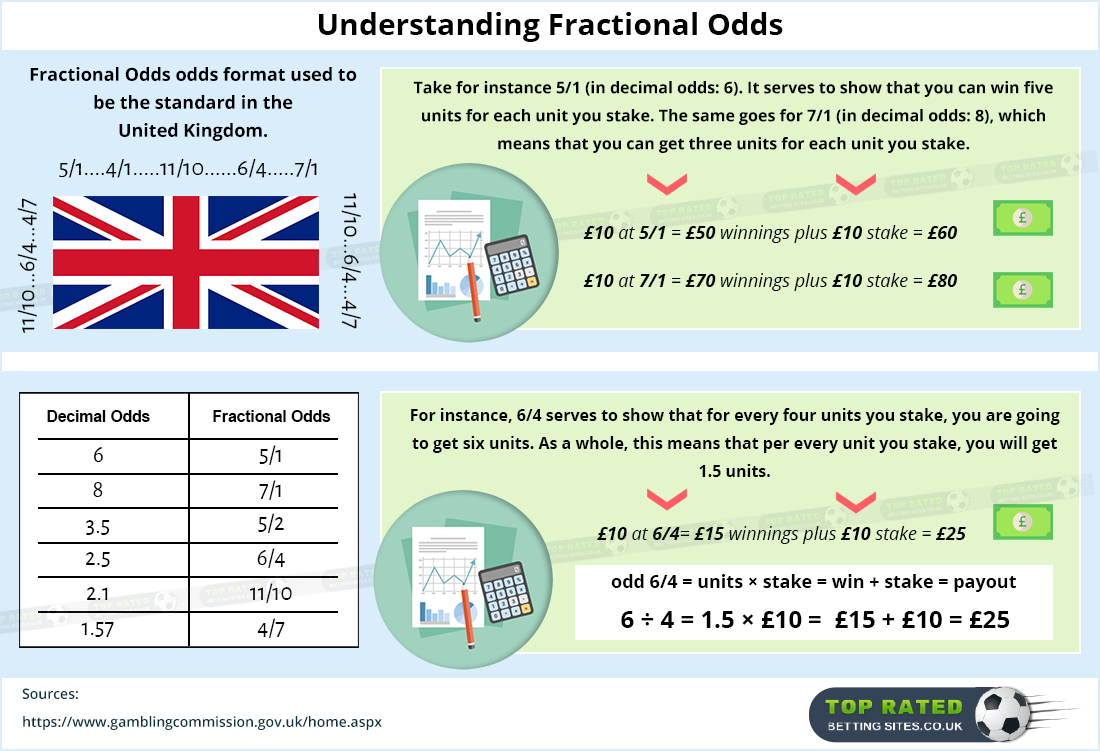40 To 1 Odds Meaning
- A 1 in 500 chance of winning, or probability of winning, is entered into this calculator as '1 to 500 Odds are for winning'. You may also see odds reported simply as chance of winning as 500:1. This most likely means '500 to 1 Odds are against winning' which is exactly the same as '1 to 500 Odds are for winning.'
- Therefore, the odds of rolling four on a dice are 1/5 or 20%. Odds Ratio (OR) is a measure of association between exposure and an outcome. The OR represents the odds that an outcome will occur given a particular exposure, compared to the odds of the outcome occurring in the absence of that exposure. Important points about Odds ratio.
- The Packers would be 1.714 in decimal odds as a -140 favorite in American odds. For every $1 risked, you’re profiting 71.4 cents, plus your $1 back. The Vikings would be 2.2 in decimal odds as a +120 underdog, meaning for every $1 risked, you’re profiting $1.20 and getting your $1 back.
- So if you bet £10 at odds of 5.0 and won, you would receive £50 back – made up of a £40 profit and the return of your £10 stake. Because these odds include your stake, decimal odds will always be over 1.0 and an even money bet would be written as 2.0. Fractional Odds.
You just minus one from the decimal odds, turn that number into a fraction and reduce it down to it’s simplest form. Let’s take decimal odds of 4.5, this is the equation: 4.5 – 1 = 3.5 35/10 - 7/2. If the decimal price is 1.25, you convert it into fractional odds like this: 1.25 – 1 = 0.25 25/100 - 1/4.
When placing a bet (regardless of whether it’s online or at a high street bookmaker), the payout you will receive is relative to the odds that the bookie has set for your selection. There are three main formats that odds are given in – Fractional, Decimal and US Money Line; most online betting sites will offer the odds in multiple formats depending on your preferences.
Note: If you’re just looking for a comparison table to convert the odds, just skip to the end of the article by clicking here.

Decimal Odds
Decimal odds are the simplest to understand and are favoured by punters in Europe, Australia and Canada. They are given in a numeric format such as ‘5.0’ and the total amount you receive from a winning bet can be calculated by multiplying the stake by the number – this includes both your winnings and your original bet.
So if you bet £10 at odds of 5.0 and won, you would receive £50 back – made up of a £40 profit and the return of your £10 stake.
Because these odds include your stake, decimal odds will always be over 1.0 and an even money bet would be written as 2.0.
Fractional Odds
Fractional odds are what you will find in UK high street bookies, as well as pretty much any reference to betting odds in the British media. Here, the odds are given as a fraction which represents the profit returned to the bettor if they are successful, and unlike decimal odds, this figure does not include the original stake which is added afterwards.
So if you bet £10 at 2/1 and won, you would receive £30 back – made up of your £20 profit (2/1 x £10 = £20) plus your £10 stake.
If the outcome you are betting on has a high chance of winning, the fraction may equal less than one – such as 1/2. So if you bet £10 at 1/2 you would receive £15 back – made up of your £5 profit (1/2 x £10 = £5) plus your £10 stake.
US Odds / Moneyline / Line Odds
What Does 5 To 1 Odds Mean
For most British punters, moneyline odds (also referred to as US odds or Line Odds) might seem particularly confusing or unfamiliar, but they’re relatively easy to understand if you try, just in case you’re ever in Vegas and want to place a bet at a sportsbook. Line odds are often referred to in films and TV shows.
Moneyline odds can be either positive or negative (eg: +400 or -400). A positive number relates to the profit you would receive on a $100 bet – so +400 means you would win $400 on a $100 bet.
If the number is negative it relates to the amount of money you would need to bet in order to win $100 (ie: if the odds are less than evens). So -$400 means that you would need to bet $00 to win $100 (plus the return of your stake).

So if you bet £10 at +200 and won, you would receive £30 back – made up of your £20 profit (£200 return on a £100 bet = £20 on £10) and the return of your £10 stake.
And if you bet £10 at -200 and won, you would receive £15 back – made up of your £5 profit (£200 would return £100 so £10 returns £5) and the return of your £10 stake.
You may have noticed that even money bets could be written as either +100 or -100 and are commonly just written as ‘100’ without the preceeding positive or negative.
Betting Odds Compared
2 To 1 Odds Mean
We thought it might be handy to provide a quick comparison of the different odds, which you’ll find in the table below.
40 To 1 Odds Meaning

40 To 1 Odds Meaning Slang
| Fractional Odds | Decimal Odds | US Odds |
|---|---|---|
| 1/10 | 1.1 | -1000 |
| 1/5 | 1.2 | -500 |
| 3/10 | 1.3 | -333.33 |
| 2/5 | 1.4 | -250 |
| 1/2 | 1.5 | -200 |
| 3/5 | 1.6 | -166.70 |
| 7/10 | 1.7 | -142.90 |
| 4/5 | 1.8 | -125 |
| 9/10 | 1.9 | -111.10 |
| EVENS (1/1) | 2.0 | +/-100 |
| 2/1 | 3.0 | +200 |
| 3/1 | 4.0 | +300 |
| 4/1 | 5.0 | +400 |
| 5/1 | 6.0 | +500 |
| 6/1 | 7.0 | +600 |
| 7/1 | 8.0 | +700 |
| 8/1 | 9.0 | +800 |
| 9/1 | 10.0 | +900 |
| 10/1 | 11.0 | +1000 |
| 20/1 | 21.0 | +2000 |
| 30/1 | 31.0 | +3000 |
| 40/1 | 41.0 | +4000 |
| 50/1 | 51.0 | +5000 |
| 99/1 | 100.0 | +9900 |